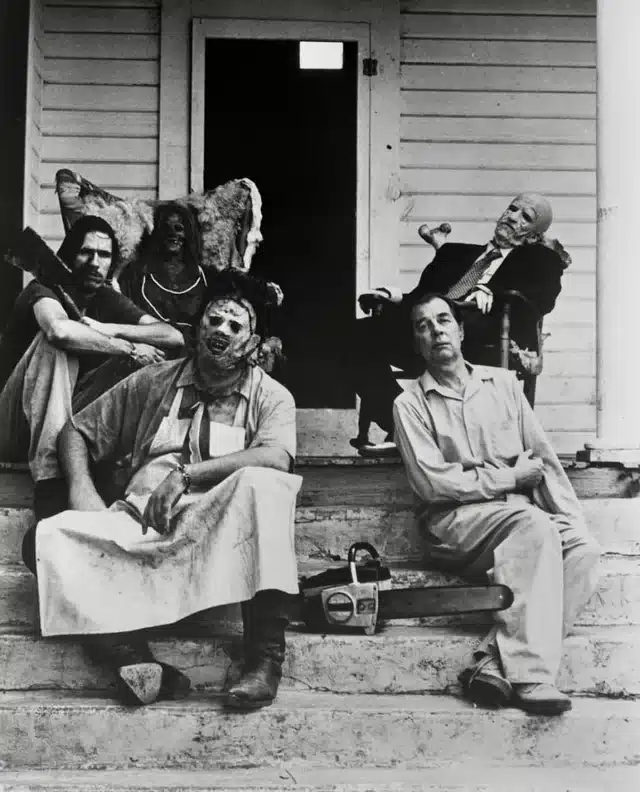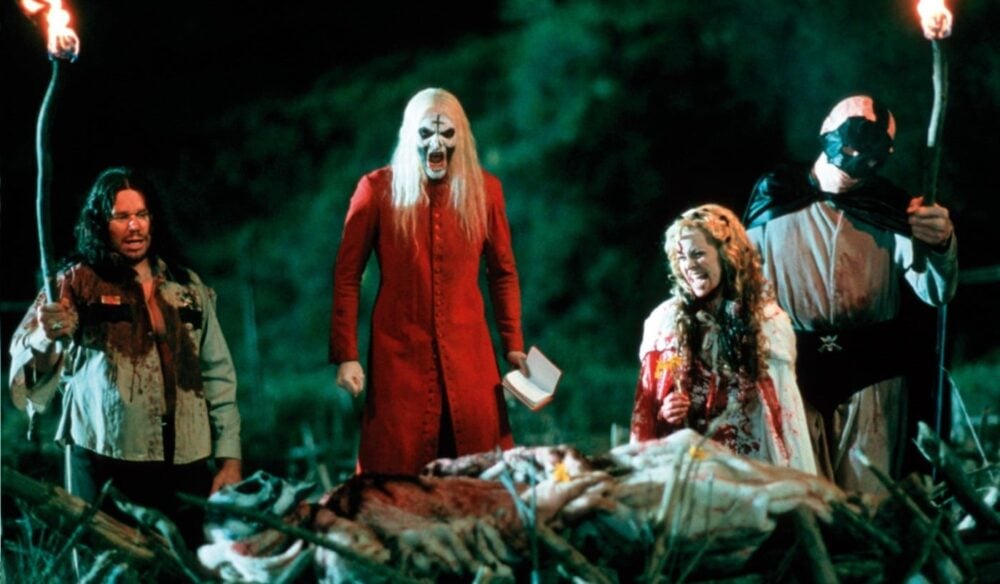Thanksgiving can be a dread-filled holiday. The promise of a family gathering brings with it fears and anxieties that range from unwanted questions (So, when are you finally getting married?) to the arrival of everyone’s openly racist uncle (Affirmative Action’s gone? Free at last!). Depending on the household, the turkey isn’t event that great, which opens up whole other set of questions regarding the need to even visit family in the first place.
Things don’t have to be this painful, this scary. Sometimes, being reminded of the bonds family creates can go a long way in trying to have somewhat of a good time in the presence of weird or annoying relatives.
Let horror be that reminder. Here are four films that show just how important family can be, blood-related or not, when it allows a group of people to come together and eat, maim, torture, skin, and kill as one.


- Hellraiser, dir. Clive Barker (1987)
There’s something to be said about the fact that Clive Barker’s Cenobites always respond to a summoning as a group. Their brand of torture is clearly meant to be appreciated as a unit, tuned to the exquisite symphony of pain they produce as they hook and tear the skin of the people who open their hellish box. It’s the reason why Hellraiser is so terrifying. Instead of getting one creepy guest, you get a family of them. And they’re not there to play nice.
The movie follows a family that moves to a house left behind by a relative called Frank, a sexual deviant that managed to call the Cenobites into our realm only to get ripped apart by them. Frank gets brought back from the dead by mistake, and with him the possibility of an encore performance by the Cenobites. The leatherbound and elegantly wounded demons possess a voyeuristic fascination with suffering, highly sexual in its manifestation. That they never travel between realms alone so as not to miss out on the pleasures of dismemberment and death points to a twisted kind of familial bond that finds in violence the glue that holds them together.


- The Texas Chainsaw Massacre, dir. Tobe Hooper (1974)
There’s a case to be made that the Sawyers are the most important family in all of horror. Even though Leatherface is its most recognizable member, he’s part of a cannibal household that sees everyone doing their part to put food on the table. Simply, the Sawyers’ created their own brand of carnage, and it is family-forward. The horror they inspire comes from their psychopathic bond, not just because one of them wears human skin masks.
Texas Chainsaw Massacre follows a group of hippies that cross paths with the flesh-eating Sawyers as they travel around Muerto County, Texas. They first meet an unhinged hitchhiker, followed by the owner of a BBQ joint that sells an entirely different kind of mystery meat, only to then have the privilege of meeting Leatherface himself. Turns out they’re related and that they live with a decrepit blood-loving grandpa in a desolate house.
Leatherface is a brute, a large man that lets his chainsaw do the talking. It’s meant to be taken literally here. Other than killing, Leatherface only emits childlike grunts. He’s bullied by the other members of his family and is brazenly ordered around under the threat of getting hit with a stick. It speaks to the role family plays in creating monsters. You can’t have one without the other. Chainsaw-wielding maniacs don’t just come out of nowhere. They’re raised as such by their loved ones.


- House of a Thousand Corpses, dir. Rob Zombie (2003)
Rob Zombie’s twisted killer family movie is a testament to the ability relatives possesses to make a group activity out of anything. Much like Texas Chainsaw Massacre, House of a Thousand Corpses finds its horror in the coordinated efforts of a sadistic family rather than on the actions of a single murderer. The result is an insidiously brutal horror movie that frames family as a kind of Hell that breeds a special kind of hatred towards humanity. For the Fireflys (and Otis Driftwood, their adopted brother) murder is a love language.
A flat tire and an empty gas tank puts two unsuspecting couples in the sights of the Firefly family. The now iconic murder clown known as Captain Spaulding (played to perfection by the late Sid Haig) points the soon-to-be-dismembered victims towards the people that they’re told can help them get out of their current predicament. It all deteriorates quite fast for the couples as they’re invited into the Fireflys’ house under the guise of hospitality. Hidden creatures, self-indulgent displays of sexual violence, and a gleeful disposition for torture manifest soon after to paint a picture of a tight-knit family unburdened by morality. If Texas Chainsaw is about the monsters family creates, House of a Thousand Corpses is about its ability to shape and nurture pure evil.


- Somos lo que hay (We Are What We Are), dir. Jorge Michel Grau (2010)
Seems like cannibalism is the great unifier, especially when it comes to families. In Mexican director Jorge Michel Grau’s Somos lo que hay, it’s what keeps a family suffering extreme poverty alive. The movie follows a family whose life is thrust into chaos after the sudden death of their patriarch. He was a watchmaker, the sole provider of the household and the person responsible for bringing food back home (in the form of people). The family had long adopted cannibalism as a means of survival, an evil born out of necessity. The father’s death leaves a void that forces the family to consider a new leader and whether the ritualistic nature of their nutrition will remain unchanged or not.
Michel Grau crafts a biting takedown of Mexico’s class system and how people have come to accept that economic gaps in society exist and that we have no choice but to put up with them. The family at the center of the story embraces the horrifying nature of their diet as a response to this cruel system, to its indifference. The point isn’t to judge. It’s to see how people react when put in a position where doing something terrible to satisfy basic human needs is the only viable option left. Family unity, though, is paramount. It’s what keeps them from giving up altogether, what fuels their perseverance.
Eating human flesh, in this case, is a form of dark salvation, a last resort to keep the idea of family from collapsing. It’s a concept that becomes more interesting when you realize that cannibalism is more commonly presented as a reliable marker of absolute evil in horror films. In Somos lo que hay, it’s what keeps a family together.
Cover image by Gabriel Serrano Denis.


